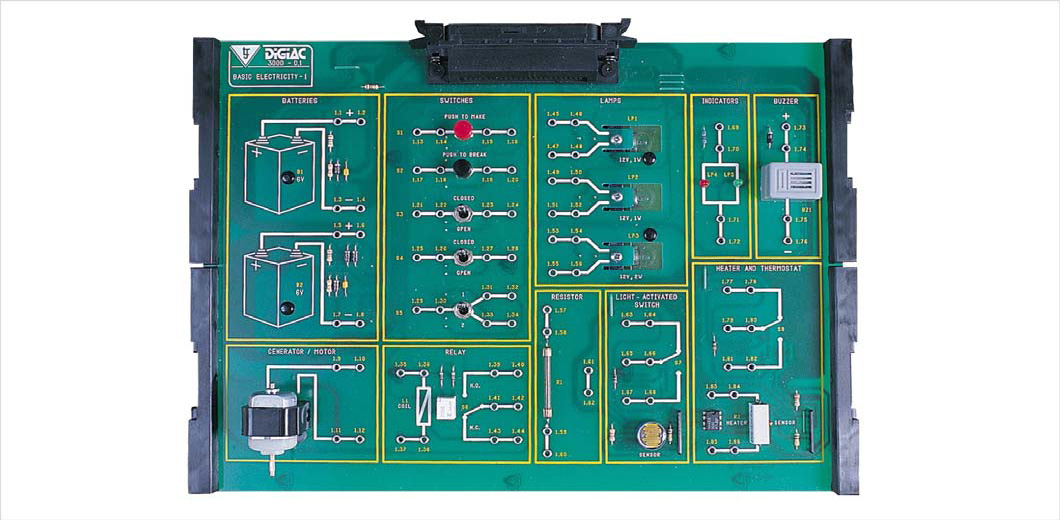Basic Electricity Study Module
The Basic Electricity Study Module (301-01) is designed to introduce students to electricity and electronics through a wide range of practical activities. Using either of the Experiment Platforms, users can select from a range of faults to be inserted into the study module circuits to develop electronic diagnostic and faultfinding techniques.
The board can also be used in conjunction with our optional cloud-based engineering software, which offers online interactive theory presentations, investigations, and assessments to underpin the practical learning carried out on this resource.
Topics include the following:
- Symbols and Switches
- Magnetism and Relays
- Measuring Electricity
- Lamps in Series and Parallel
- Motors and Generators
- Thermistors
- Fault Finding
Typical activities include:
- Represent electrical circuits in diagrams
- Set up and investigate circuits with switches
- Identify what magnetism is
- Set up and investigate a latched relay system
- Explain why metals are good conductors
- Explain EMF and Potential Difference
- Use a multimeter to measure current and voltage
- Work out current, voltage and power requirements for lamps in series and parallel
- State what resistance is
- Recognize construction/use of variable resistors
- Recognize how a potentiometer can be used to set voltage across a component
- Measure the current flowing in a circuit
- Measure and calculate resistance
- State the relationship between electric current and magnetic field
- Recognize the dynamo/generator effect
- Locate faults in simple electric circuits
Please Note: This resource requires access to an Advanced Electronics Experiment Platform (300-01).
